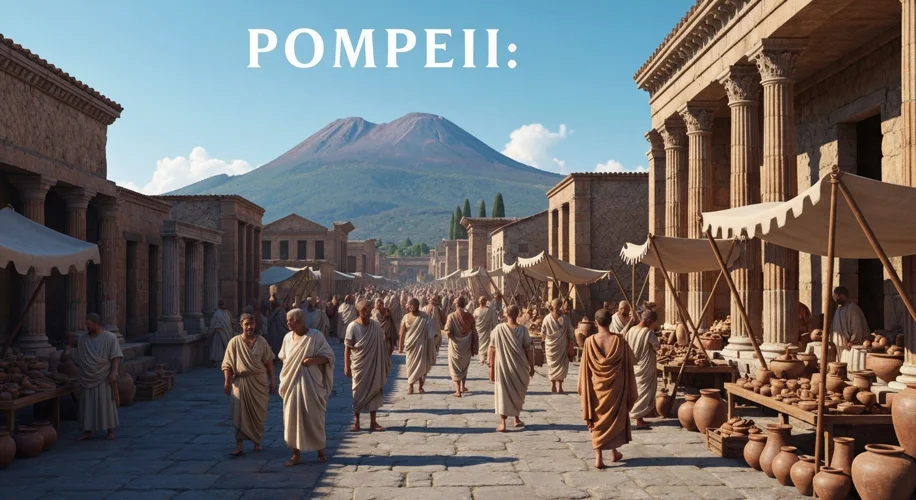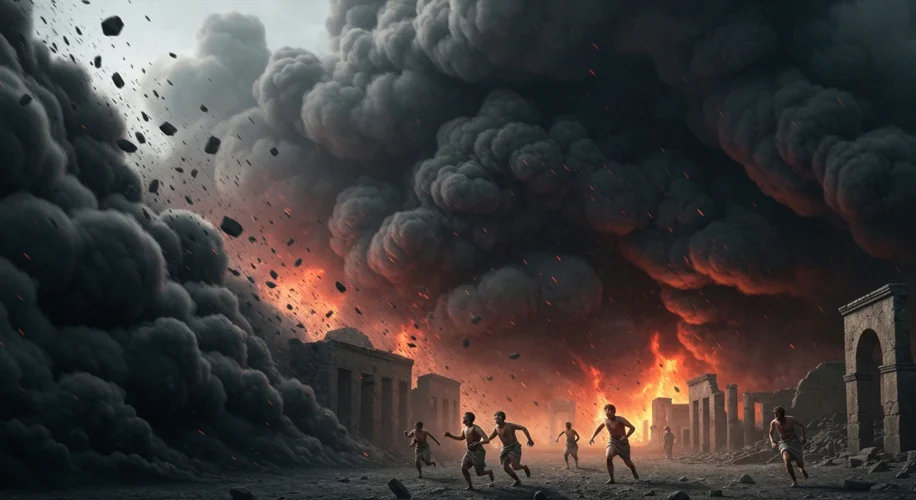The air in Pompeii on that fateful day in 79 AD was thick with the scent of baking bread, the murmur of conversations, and the distant rumble of life. It was a bustling Roman city, alive with commerce, culture, and the everyday concerns of its inhabitants. Children played in the narrow streets, merchants hawked their wares, and families gathered for meals, oblivious to the cataclysm brewing in the heart of Mount Vesuvius.

For centuries, Pompeii thrived. Its strategic location near the Bay of Naples made it a prosperous port and a desirable vacation spot for wealthy Romans. Its citizens enjoyed a rich social life, evident in the grand villas adorned with intricate frescoes and mosaics, the public baths filled with steamy conversations, and the amphitheater echoing with the roar of the crowds. Houses ranged from modest dwellings to luxurious residences with peristyle gardens, a testament to the city’s diverse social fabric.
The fateful day began like any other. The earth had been trembling for days, a warning sign that, in their hubris, many Pompeiians had come to ignore. The volcanic activity was not unheard of, and previous tremors were seen as mere inconveniences rather than harbingers of doom.
Around midday, Vesuvius unleashed its fury. A towering column of ash, pumice, and gas erupted miles into the sky, blotting out the sun and plunging the city into an eerie, terrifying twilight. The initial phase of the eruption saw a rain of lightweight pumice stones, which began to accumulate on rooftops, causing many to collapse. This was followed by a pyroclastic surge – a superheated wave of gas and volcanic debris moving at incredible speeds – that swept through the city, instantly incinerating everything in its path.

It was in these final moments that the tragedy of Pompeii truly unfolded. People, caught by surprise, desperately tried to flee, to shield their loved ones, or to find shelter. The gas from the eruption was toxic, and the sheer heat from the pyroclastic flows was unsurvivable. Many were overcome by the poisonous fumes, while others were buried under tons of volcanic material.
The eruption continued for nearly two days, burying Pompeii and its neighboring town of Herculaneum under a thick blanket of ash and pumice. The city, once a vibrant hub of Roman life, was effectively erased from the map, lost to time and memory for nearly 1700 years.
It wasn’t until the 18th century that systematic excavations began, slowly revealing the incredible story of Pompeii. What archaeologists uncovered was not just ruins, but a remarkably preserved snapshot of Roman life. The ash acted as a natural preservative, encasing buildings, objects, and even the forms of the victims.

These casts, created by pouring plaster into the voids left by decomposed bodies, offer a poignant and heartbreaking glimpse into the final moments of Pompeii’s inhabitants. We see individuals shielding their faces, embracing their children, or curled up in futile attempts to escape the inferno. These are not just artifacts; they are echoes of real people, real lives cut tragically short.
The artifacts unearthed – pottery, tools, furniture, jewelry, and even preserved food – provide an unparalleled insight into Roman domesticity, social hierarchy, and daily routines. We can explore the layout of their homes, understand their religious practices through household shrines, and even read the graffiti scrawled on walls, offering a raw and unfiltered look at their thoughts and concerns.
The story of Pompeii is a stark reminder of nature’s immense power and the fragility of human existence. Yet, it is also a testament to the enduring legacy of a civilization. Through the dust and ashes, Pompeii continues to speak to us, offering a vivid and intimate portrait of a Roman city frozen in time, its people forever preserved in the very force that annihilated them.

